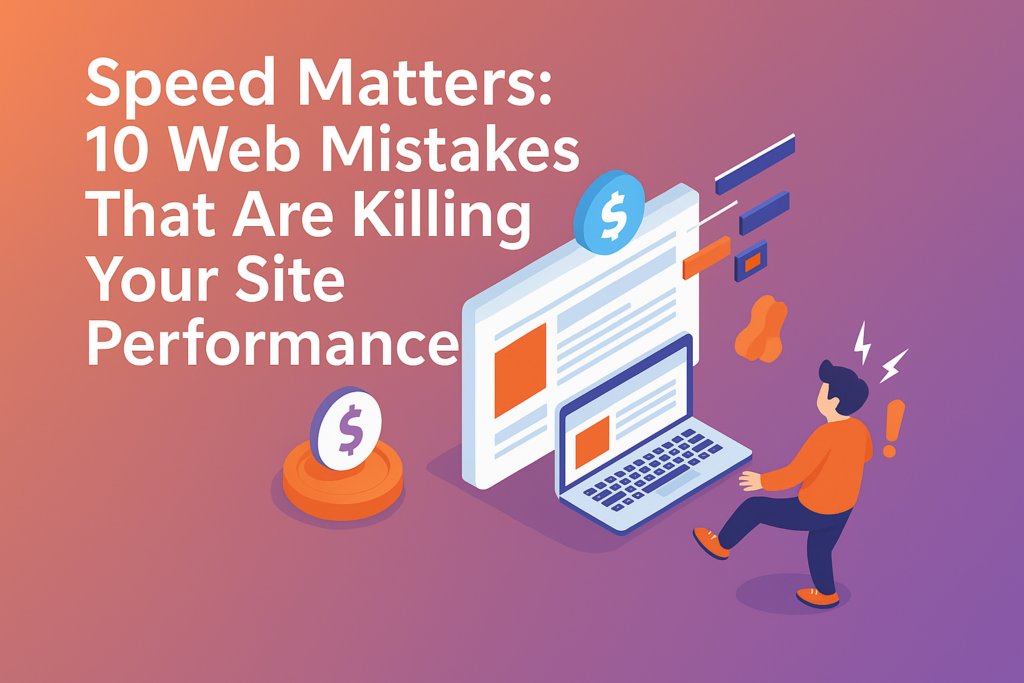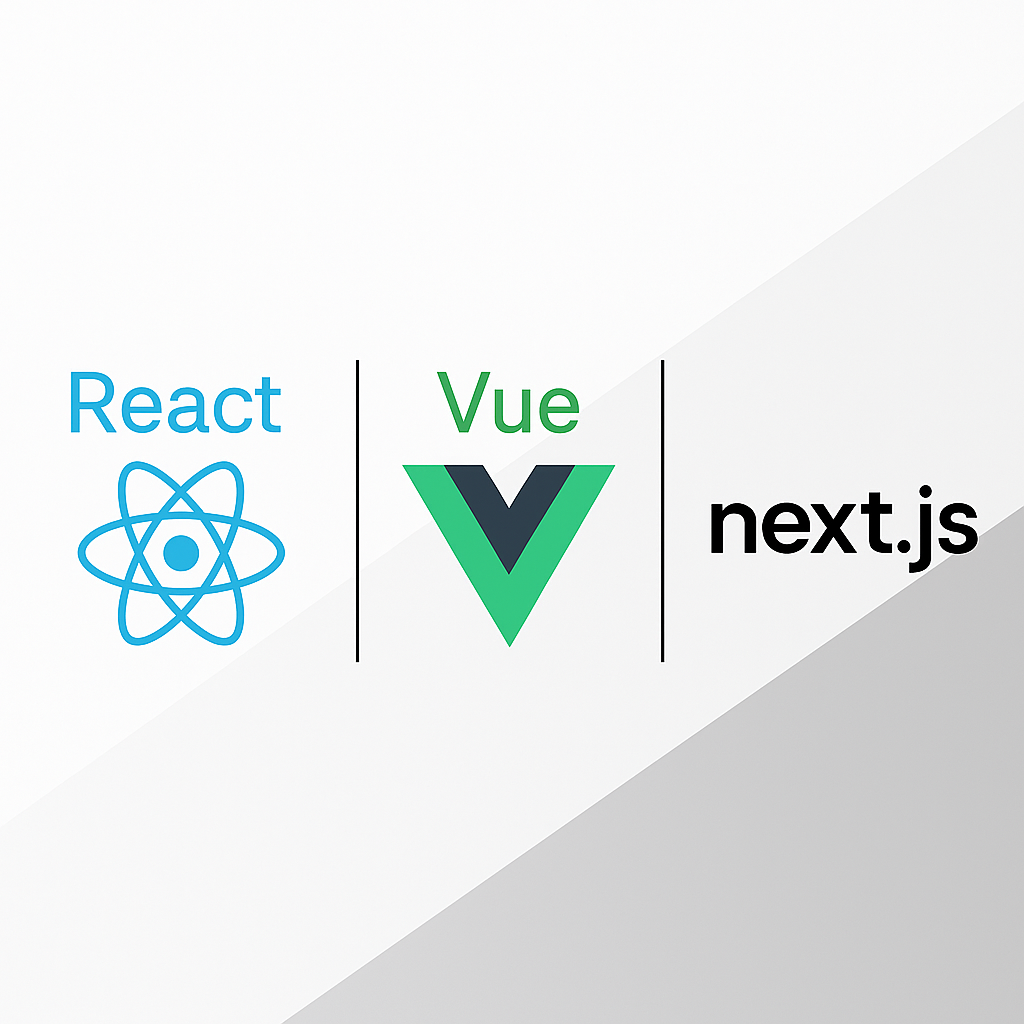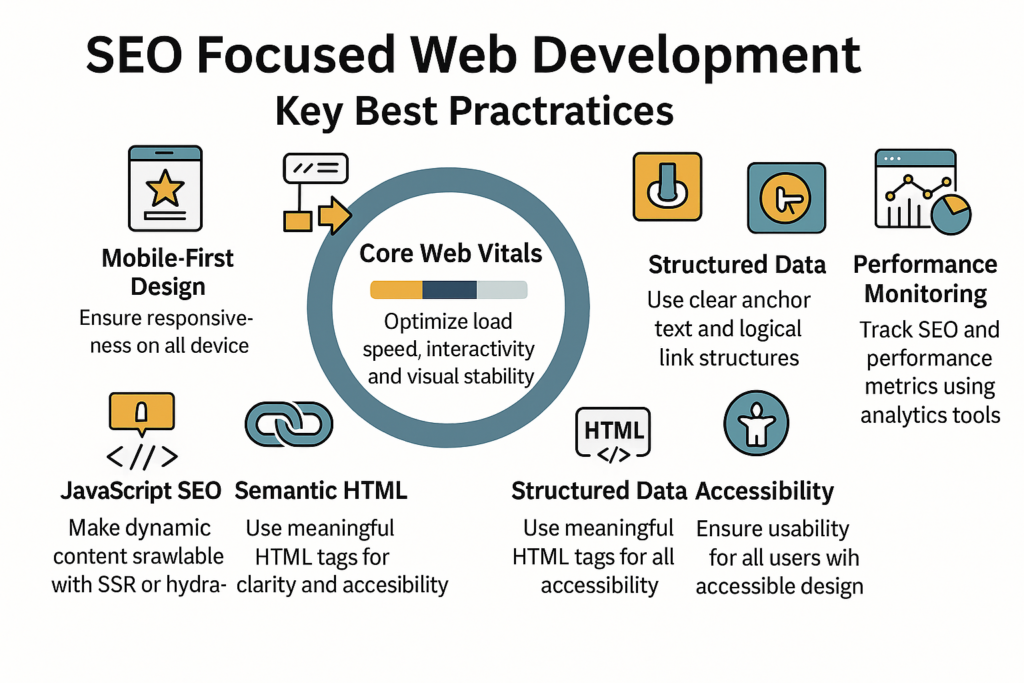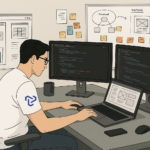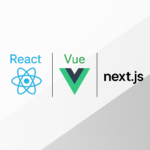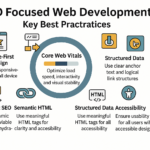Understanding a day in the life of a web developer at Triophase isn’t just insightful—it’s essential. Whether you’re considering a tech career, hiring for a dev role, or simply curious about how digital products come to life, this inside look helps demystify the process. Developers are the builders behind every clickable button, smooth animation, and seamless user experience.
At Triophase, the work goes beyond writing code—it’s about solving problems, thinking creatively, and collaborating across teams. Knowing what a developer’s day really looks like reveals the pace, challenges, tools, and teamwork that power modern web projects. It also highlights the culture, values, and priorities that make Triophase unique. If you’re aiming to join the tech world or partner with a dev team, this glimpse helps set realistic expectations—and maybe even inspires your next move.
Our Daily Dev Routine at Triophase
8:00 AM – Morning Routine and Mental Prep
- Most of our developers kick off their day around 8:00 AM, starting with a personal routine that helps set the tone. Some reach for a cup of tea, while others opt for a brisk run through the park to clear their heads. There’s often a quiet moment with a tech blog, a Reddit scroll, or even some early problem-solving.
- This time is sacred—before the flood of standups, code reviews, and Slack pings. It’s a space where creativity flows freely, when the mind is fresh and undistracted. You might catch someone sketching out a feature idea in a notebook or digging into the latest JavaScript framework update.
- It’s not about productivity metrics—it’s about mental clarity. These small rituals help devs shift gears from rest to deep work, setting a solid foundation for a focused, productive day ahead.
10:00 AM – Login and Environment Setup
- By 10:00 AM, the workday officially begins as laptops light up and developers dive into their setup routines. At Triophase, the first step is usually a check-in with Slack or internal team channels to catch up on any overnight messages or updates.
- Next comes a quick scan through Bitbucket pull requests, often prioritizing reviews or merges that unblock others. Developers then look over any flagged issues—whether from QA, the monitoring system, or error tracking tools.
- Once caught up, it’s time to pull the latest updates from the repository, ensuring local code is fully synced with the team’s progress. Depending on the project, this might be followed by spinning up a Docker container, launching a local test environment, or verifying service dependencies.
- This initial setup is all about creating a stable, ready-to-code workspace—critical for a smooth, efficient start to the day.
10:30 AM – Daily Standup (Agile Style)
- At 10:30 AM sharp, the team gathers for a quick, focused daily standup—a cornerstone of our Agile workflow. This 15-minute meeting helps everyone stay aligned and move forward efficiently. Each team member shares three key updates: what they worked on yesterday, what they’re working on today, and any blockers that might be slowing them down.
- The format is simple but powerful. It brings visibility to progress, fosters accountability, and surfaces issues early, before they escalate. Whether in the office or remote, most developers join via Zoom or Google Meet, ensuring everyone stays connected regardless of location.
- These quick syncs eliminate the need for long status emails and help maintain a tight feedback loop across teams. For us, the standup isn’t just a habit—it’s a vital checkpoint that keeps the momentum going and the collaboration strong throughout the sprint.
10:45 AM – Heads Down, Code Up
- After the standup, it’s officially go time. This is when our developers dive deep into their assigned tasks, usually tracked in Jira, ClickUp, or GitLab. The work varies depending on the sprint and project stage.
- Some are busy building new UI components using React or sticking to classic HTML, CSS, and JavaScript. For UI design references, we rely heavily on Figma. Others are working on RESTful APIs built with Laravel, our in-house PHP framework, or Node.js.
- There’s also a focus on bug fixing—tackling issues reported by QA—as well as writing unit, integration, or acceptance tests to maintain quality. Occasionally, devs spend this time refactoring legacy code to enhance performance and readability.
- This is prime focus time. Noise-canceling headphones go on, distractions go off, and it’s all about getting into that deep work zone to ship clean, reliable code.
12:30 PM – Code Reviews and Collaboration
- While deep focus drives progress, collaboration keeps the quality high. Around 12:30 PM, many developers shift gears to code reviews—an essential part of our development process. This is the moment to catch bugs early, suggest cleaner solutions, and ensure coding standards are followed across the board.
- Reviewing pull requests isn’t just about finding issues—it’s about learning from each other and improving as a team. It’s common to see thoughtful feedback, links to better approaches, or even shout-outs for clever implementations.
- For more complex tasks or when helping new teammates, devs often turn to pair programming—two minds, one keyboard. It’s an excellent way to share knowledge, explore solutions in real time, and accelerate the ramp-up for new developers.
- This blend of collaboration and critique strengthens the codebase and builds a culture where feedback is welcomed, not feared.
2:00 PM – Lunch Break
- At Triophase, lunch is sacred. It’s more than just a break—it’s a time to recharge and enjoy a good meal. Most developers head to the office canteen, where a delicious lunch is provided by the company, offering a chance to relax and connect with teammates over food.
- For those who prefer a quieter space, eating at their desks is always an option. And while remote developers might not join in person, they still use this time to step away—whether it’s to walk the dog, catch up on a hobby, or take a quick nap.
- In-office, lunch can also turn into some light physical activity, like a quick game of cricket or football in nearby open spaces. No matter where they are, this midday pause helps everyone return to work with a clearer head and renewed energy.
3:00 PM – Afternoon Grind: New Features, Testing, and Bugs
- Post-lunch, it’s back to the grind—and energy is channeled into building new features, tightening up tests, or hunting down stubborn bugs. This is when the real variety of development work kicks in.
- A developer might push their latest feature branch to staging, prepping it for QA or team review. Others may dive into writing end-to-end tests using tools like Cypress or Playwright to ensure everything runs smoothly. There’s often some debugging too—especially if a tricky issue is hurting load times or performance.
- Collaboration continues, whether it’s syncing with designers on a subtle UI detail or coordinating with the DevOps team to fine-tune deployment scripts.
- It’s not always glamorous. Some days are full of bug fixes, others feel like endless troubleshooting. But on the good days, it’s all about greenfield features and pushing the product forward—one commit at a time.
4:30 PM – Sync with Designers, PMs, and QA
- No dev is an island—collaboration is the backbone of great products. Around 4:30 PM, cross-functional syncs kick into high gear. This is when Product Managers step in to clarify requirements, ensuring developers have the context they need to build the right thing.
- Designers often present updated Figma files, walking through visual tweaks, UX flows, or interactive prototypes. Meanwhile, the QA team might raise test issues, flag edge cases, or suggest improvements to ensure a smooth user experience.
- Sometimes, stakeholders pop in to check on timelines and overall sprint progress. It’s all about staying aligned and moving fast without breaking things.
- Whether it’s a quick video call, a shared doc, or an async Loom message, the goal is clear: keep everyone on the same page. These check-ins maintain momentum, minimize miscommunication, and make sure everyone is rowing in the same direction.
5:30 PM – Documentation and Cleanup
- Good code isn’t just functional—it’s understandable. As the day winds down, developers focus on the often-overlooked task of documentation and cleanup. This hour is dedicated to making sure the work is clear for both current and future developers.
- Developers might write or update documentation—whether it’s updating README files or contributing to Confluence pages to clarify new features or processes. Adding comments in the codebase is a priority too, ensuring that complex logic or important decisions are easy to follow.
- At the same time, developers often close or update tickets in Jira, marking tasks as completed or transitioning them for review. They may also record a demo or screencast for the QA team, helping them understand how to test new features effectively.
- Though documentation isn’t always glamorous, it’s a gift to future-you—or any teammates who pick up the project down the line.
7:00 PM – End-of-Day Wrap-Up
- As the workday comes to a close, developers go through a few final rituals to wrap things up. The first step is to push the latest code to the repository, ensuring that all changes are saved and synced with the team.
- Next, they update the team on Slack, letting everyone know the progress made and sharing any key insights or issues. If there are any remaining blockers, they flag them so the team can address them the next day.
- Before logging off, many devs take a moment to set up tasks for tomorrow, prioritizing what needs to be tackled first thing. This helps ensure a smooth transition into the next day’s work.
- Finally, many devs take a quick self-retro: What went well today? What could’ve gone better? It’s a brief reflection to learn and improve for tomorrow. Then, it’s shutdown time, and we are ready to recharge for the next day.
9:00 PM – Personal Projects, Learning, and Play
- For many developers, the day doesn’t truly end at 9:00 PM. After work, they dive into personal projects that fuel their passion. Whether it’s open-source contributions, building side projects like apps, games, or tools, or experimenting with new technologies, this is the time to explore ideas that go beyond the daily grind.
- Others prefer to learn—whether by watching conference talks or YouTube tutorials to pick up new skills, or reading dev blogs and newsletters to stay up to date with industry trends.
- Some developers also give back by mentoring junior devs, helping guide them through challenges, and sharing their knowledge. Others engage with coding communities on platforms like Discord or Twitter/X, where they collaborate, discuss ideas, and exchange tips with peers.
- This time is about growth, creativity, and the joy of coding—all while nurturing connections within the wider development community.
The Tools We Use
Here’s a quick look at our everyday stack:
a. OS
- We primarily use Linux due to its flexibility, stability, and developer-friendly environment. It’s well-suited for server-side development, open-source tools, and optimizing performance. Linux ensures smooth workflows and compatibility across our cloud environments and development tools.
b. Frontend
- Our frontend stack includes React, a powerful JavaScript library for building interactive UIs, and TailwindCSS, a utility-first CSS framework. React offers component-based architecture for scalability, while TailwindCSS speeds up design with pre-built, customizable classes for rapid UI development.
c. Backend
- On the backend, we use Node.js and Express for building fast, scalable web applications. PHP and Laravel also play a crucial role in our stack, providing flexibility for handling server-side logic, while Laravel offers elegant syntax and tools for rapid application development.
d. Cloud Environment
- We rely on GCP, AWS, and Linode to host our applications. These cloud platforms offer scalable infrastructure, advanced storage solutions, and global reach, ensuring high availability and performance. They support CI/CD pipelines and DevOps workflows efficiently.
e. DevOps
- Our DevOps stack includes Docker for containerization and Kubernetes for container orchestration. Docker ensures consistency across development, staging, and production environments, while Kubernetes automates deployment, scaling, and management of containerized applications, providing high availability and resilience.
f. Databases
- For databases, we use MySQL for relational data and MongoDB for flexible, NoSQL document-based storage. MySQL is ideal for structured data and complex queries, while MongoDB excels at handling unstructured data and scaling horizontally to accommodate large volumes of data.
g. Version Control
- We use BitBucket and ClickUp for version control and task management. BitBucket is crucial for managing our git repositories and collaborating on code, while ClickUp helps in task tracking, project planning, and keeping everything organized across teams, making workflow management seamless.
h. CI/CD
- GitHub Actions and Jenkins power our CI/CD pipelines. GitHub Actions automates workflows directly from our repositories, while Jenkins helps in automating builds, tests, and deployments across different environments, ensuring quick, reliable releases with minimal manual intervention.
i. Communication
- For communication, we rely heavily on Slack for team collaboration, real-time updates, and channel-based discussions. For video calls and screen sharing, we use Zoom and Google Meet, ensuring smooth, efficient communication with both remote and in-office team members.
j. Project Management
- Our team uses Jira, Trello, and Notion for managing projects and workflows. Jira helps us organize tasks, track progress, and manage sprints. Trello offers a visual approach to task management, and Notion serves as a knowledge base and collaborative documentation tool.
k. Design
- We use Figma for designing and prototyping UI/UX. Figma allows real-time collaboration, enabling designers and developers to work together seamlessly. Its powerful features for design systems, prototyping, and version control make it an essential tool for creating intuitive, high-quality user interfaces.
The Culture at Triophase
What makes our dev life unique? Culture.
a. Autonomy
- We believe in empowering our developers by giving them the freedom to own their work. Developers are trusted to take the lead, make decisions, and tackle challenges on their own terms. This sense of responsibility drives motivation, fosters innovation, and leads to higher-quality outcomes.
b. Flexibility
- At Triophase, we offer the ultimate flexibility in how you work. Whether you prefer the remote setup or the energy of the office, it’s your choice. We trust our devs to manage their work-life balance, ensuring you have the freedom to do your best work wherever you feel most comfortable and productive.
c. Creativity
- We celebrate innovation and encourage our devs to think outside the box. Creativity is never micromanaged here; it’s encouraged. Whether it’s experimenting with new technologies or coming up with novel solutions to complex problems, we give our developers the space and support to be creative in everything they do.
d. Support
- No developer is left alone to struggle. Got a blocker? Help is just a Slack message away. Our collaborative culture ensures that every team member has access to resources and support when they need it most, making problem-solving faster and keeping the team united.
- At Triophase, we believe great developers aren’t just code machines—they’re thinkers, creators, and collaborators.
The Challenges
Let’s be real—web development isn’t always smooth sailing.
a. Browser quirks
- Every developer has faced the dreaded browser compatibility issue. From inconsistent rendering to subtle differences in behavior, ensuring that your app works seamlessly across all browsers can be a time-consuming challenge. However, we use tools like Autoprefixer and CrossBrowserTesting to minimize these quirks, ensuring a smooth user experience regardless of the browser used.
b. Last-minute changes
- In web development, requirements or priorities can shift unexpectedly. Last-minute changes in the project scope or feature requests can disrupt timelines. However, our Agile methodology allows for adaptability, and we are quick to respond, adjusting tasks and resources to accommodate new demands, ensuring minimal disruption.
c. Merge conflicts
- Merge conflicts are an inevitable part of collaborative development. They can be frustrating, especially when dealing with complex branches. We resolve them efficiently by maintaining clear communication, frequent pull requests, and proper version control practices. We also ensure detailed documentation to minimize confusion.
d. Unexpected bugs
- Bugs are a part of the process, and sometimes they pop up at the most inconvenient times. Whether it’s a performance issue or an obscure edge case, solving these bugs requires patience and problem-solving skills. With effective debugging tools, comprehensive unit tests, and collaboration, we tackle issues head-on and turn them into valuable learning experiences.
e. Tight deadlines
- Tight deadlines are common, especially in fast-paced web development environments. Balancing speed and quality is always a challenge. However, we prioritize tasks, work in sprints, and focus on deliverables to meet deadlines without compromising the quality of the code. Clear communication and time management ensure we stay on track.
The Wins
There’s nothing like:
a. Seeing your feature go live
- The moment our developer code is deployed and the client’s feature is live is always a thrilling experience. It’s the culmination of countless hours of design, development, and testing. When users interact with our developer work and the feature runs smoothly, it brings a sense of pride and accomplishment. That moment of release validates the hard work and sacrifices made along the way and reinforces the value of what we do as developers—building products that make a difference.
b. Watching user feedback roll in
- There’s a unique satisfaction in seeing real-time user feedback. Whether it’s praise for a new feature or constructive criticism on an interface, this feedback loop helps us grow. Positive reviews validate the effort we’ve put into creating something useful, while negative feedback provides invaluable insights for improving the product. The constant cycle of iteration fueled by user input keeps the development process both exciting and rewarding.
c. Making something faster, cleaner, better
- Every time we optimize code, whether it’s improving performance, refactoring messy logic, or streamlining the user experience, it feels like a small victory. Clean, efficient code that runs faster and requires less maintenance is a source of pride. We take ownership of making things better, whether it’s reducing load times or improving user interface (UI) responsiveness, making the product feel more polished and user-friendly with every iteration.
d. Solving a tough bug after hours of struggle
- Every developer has had that moment—spending hours, or even days, tracking down a particularly elusive bug. The thrill of finally finding the cause, fixing it, and watching the system work as expected is unmatched. Debugging can be frustrating, but solving that tough issue provides a huge sense of satisfaction. It’s a reminder that persistence and problem-solving are at the core of being a great developer.
e. Helping a teammate level up
- There’s nothing more fulfilling than watching a teammate grow. Whether it’s mentoring a junior developer, sharing knowledge during a code review, or helping solve a complex problem, being part of someone else’s growth is deeply rewarding. It builds a sense of community, reinforces teamwork, and strengthens our collective skills. Watching others level up feels like a personal win, too, as it shows that the entire team is moving forward together, growing stronger each day.
Final Thoughts
- Web development at Triophase is fast-paced, challenging, and deeply rewarding. Each day brings something new—whether it’s a problem to solve, a feature to build, or a system to improve. Our dynamic environment keeps developers engaged, pushing boundaries, and constantly learning. If you thrive on innovation, enjoy collaborating with a talented team, and are passionate about building impactful products, then this life might just be for you. Here, we value creativity, autonomy, and continuous growth, making it an ideal place for developers who love a good challenge and want to make a real impact.
Want to join us?
- We’re always looking for curious, driven developers who want to make an impact. Check out our [Careers Page] to learn more.


